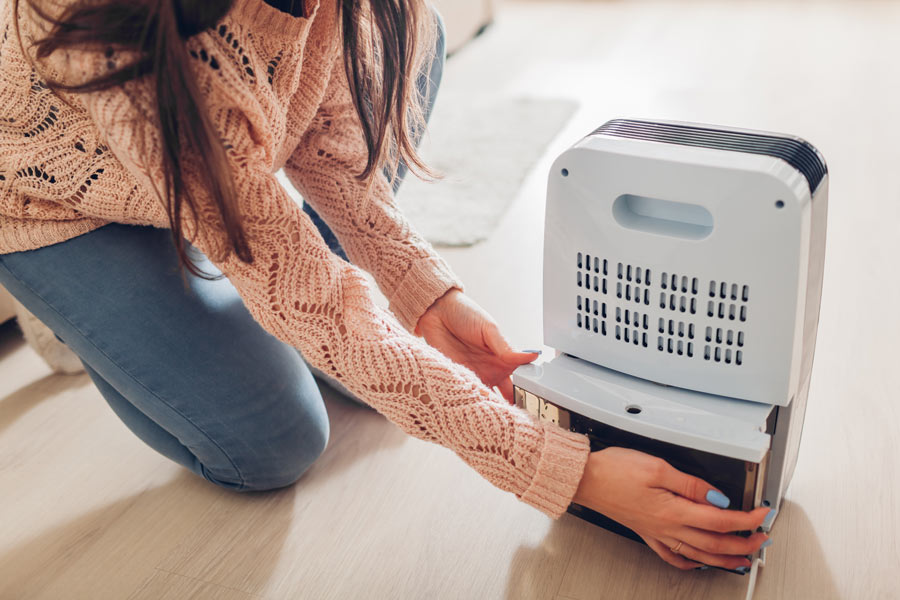
Homeowners everywhere are aware of how frustrating a flooded basement or a leak anywhere in the home can be. However, such an occurrence can also result in something even more difficult to deal with: carpet mold. Damage is a significant risk if carpet mold is present.
As it spreads through damp areas, such as inside ceilings wallsand beneath floors, the havoc wreaked by mold can result in pricey repairs and replacements. When it comes to water extraction and damage prevention, it is vital that homeowners learn the basics of drying out wet carpet.
Making sure no new water is entering the affected area is an important step before you can extract the water. Especially when it is quite rainy, you must look for pesky hidden leaks and patch any holes. If you find stagnant water, it will need to be pumped out of your home.
Be sure to move your furniture and cover any wiring or electrical outlets to protect them from being damaged by the water. Furniture, especially, can lead to mold development by hiding water from your sight, which makes moving it from the area even more important.
A wet vacuum will be necessary to get rid of any excess moisture prior to fully drying your basement’s affected area. To give yourself the best chance of preventing mold, remove the unwanted water from your home’s basement as early as you possibly can.
Taking advantage of both dehumidifiers and fans will be important during this step. If you do not have many fans, then it is time to borrow, rent or purchase more. Start by pointing these fans at the wet carpet, and allow them to run for at least a few days until you are 100% certain that the carpet is dry. Even after the carpet seems dry, there can be hidden moisture so it is vital that you take time with this step. A dehumidifier is quite effective in increasing the drying speed by taking moisture out of the room’s air.
After your basement carpet has completely dried, you are ready for the sanitizing process. Steam cleaning is the most common option during this step, although it would be advantageous to hire a professional to shampoo and re-dry the carpet if you can afford to. When cleaning the area, do not neglect the walls, baseboards, doors, trim, furniture, and anything else that may have been affected by the intrusive floodwater.
Once you have dried and sanitized both the basement’s carpet and the entire area, you are ready to perform the final step: inspecting your basement for any water or damage that you may have previously overlooked. In particular, the padding beneath your home’s carpet needs a thorough inspection due to its propensity to fuel mold development.
Overwhelmed with an emergency, need some assistance with carpet repair, or have a question? Feel free to contact Carpet Stretch and Rescue today!
By Carpet Stretch and Rescue 4-8-2021
Dec 2025
Nov 2025
Oct 2025
Sep 2025
Aug 2025
Jul 2025
Jun 2025
May 2025
Apr 2025
Mar 2025
Feb 2025
Jan 2025
Dec 2024
Nov 2024
Oct 2024
Sep 2024
Aug 2024
Jul 2024
Jun 2024
May 2024
Apr 2024
Mar 2024
Feb 2024
Jan 2024
Dec 2023
Nov 2023
Oct 2023
Sep 2023
Aug 2023
Jul 2023
Jun 2023
May 2023
Apr 2023
Mar 2023
Feb 2023
Jan 2023
Dec 2022
Nov 2022
Oct 2022
Sep 2022
Aug 2022
Jul 2022
Jun 2022
May 2022
Apr 2022
Mar 2022
Feb 2022
Jan 2022
Dec 2021
Nov 2021
Oct 2021
Sep 2021
Aug 2021
Jul 2021
Jun 2021
May 2021
Apr 2021
Mar 2021
Feb 2021
Jan 2021
Dec 2020
Nov 2020
Oct 2020
Sep 2020
Aug 2020
Jun 2020
May 2020
Apr 2020
Mar 2020
Feb 2020
Jan 2020
Nov 2019
Oct 2019
Aug 2019
Jun 2019
May 2019
Apr 2019
Feb 2019
Dec 2018
Oct 2018
Jul 2018
May 2018
Mar 2018
Nov 2017
Aug 2017
Jul 2017
May 2016